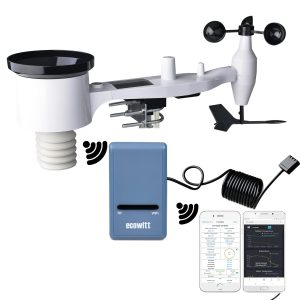Have you ever wished upon a rainbow at night? While it might sound like something out of a fairy tale, nighttime rainbows do exist! They’re called moonbows, and they’re just as enchanting as they sound. Let’s dive into the mesmerizing world of these nocturnal wonders and uncover the science and magic behind them.
What Are Moonbows?
Moonbows, also known as lunar rainbows, are essentially rainbows produced by moonlight instead of sunlight. Just like their daytime cousins, moonbows form when light is refracted and reflected by water droplets in the air. The main difference? The source of light is the moon rather than the sun1.
The Science Behind the Magic
Here’s how these nighttime marvels come to be:
- Moonlight reflection: The moon reflects sunlight towards Earth.
- Water droplets: Rain or mist must be present in the air.
- Refraction and reflection: Moonlight enters water droplets, bends (refracts), reflects off the back of the droplet, and exits.
- Color separation: As light exits the droplet, it separates into different colors.
Why Are Moonbows So Rare?
Catching a glimpse of a moonbow is like finding a four-leaf clover – it’s possible, but you need just the right conditions:
- A bright, full (or nearly full) moon
- The moon must be low in the sky (less than 42 degrees above the horizon)
- A dark sky with no light pollution
- Water droplets in the air (from rain or mist)
- The observer must be positioned with their back to the moon2
Where to See Moonbows
While moonbows can theoretically occur anywhere with the right conditions, some places are known for frequent sightings:
- Yosemite National Park, California: The mist from waterfalls creates perfect conditions.
- Cumberland Falls, Kentucky: Known as the “Niagara of the South,” it’s famous for moonbows.
- Victoria Falls, Zambia/Zimbabwe: This massive waterfall produces spectacular moonbows.
- Waimea, Hawaii: The tropical climate and waterfalls make it a moonbow hotspot.
- The Scottish Highlands: known for its mists and clear skys, moonbows are often seen here.
Moonbow Fun Facts
- Color perception: To the human eye, moonbows often appear white or grayish due to the low light conditions. However, long-exposure photographs can capture their true colors1.
- Ancient knowledge: Moonbows have been known since ancient times. Aristotle mentioned them in his work “Meteorology” around 350 BC1.
- Timing is everything: Your best chance to see a moonbow is a few hours after sunset or before sunrise when the moon is fullest and lowest in the sky4.
- Double the fun: Just like solar rainbows, moonbows can sometimes appear as double bows, with a fainter secondary bow above the primary3.
Capturing the Magic
While seeing a moonbow in person is unforgettable, capturing one on camera can be tricky. This is similar to capturing Aurora Here are some tips:
- Use a tripod for stability
- Set your camera to a long exposure (15-30 seconds)
- Use a wide aperture (low f-number) to let in more light
- Increase your ISO, but be careful of noise
- Use manual focus to ensure sharpness
There is a guide here for the Samsung S24 ultra (and other samsung phones)
Conclusion
Moonbows remind us that nature’s wonders don’t stop when the sun goes down. These rare and beautiful phenomena are a testament to the magic that surrounds us, waiting to be discovered by those patient and curious enough to look. So, the next time you’re out on a clear, moonlit night with a bit of moisture in the air, keep your eyes peeled. You might just witness one of nature’s most enchanting nighttime displays – a moonbow arcing across the dark sky, painting the night with its ethereal glow. Have you ever seen a moonbow?
Please feel free to share your experiences in the comments below!
Hi I am Marcus, MM0ZIF, a licenced Radio Amateur, Doctor of Musicology, amateur weather enthusiast. I over the years have been a Amateur Radio Tutor, Examiner, and a Regional Manager for the Radio Society of Great Britain.
This site is dedicated more towards Amateur Radio and Weather, with an angle on Technology too. I also maintain https://havenswell.com/ which is my other blog which is more aimed at cooking, hobbies and life in general as well as businness and networking.





